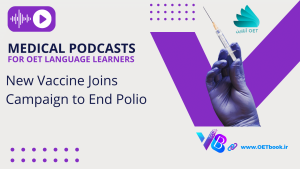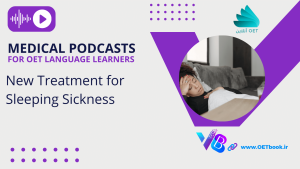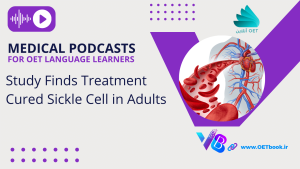Transcript
Tegan Taylor: We’ve never been able to be more informed during pregnancy than we are today. Along with the screening ultrasounds that those of us who had babies in recent decades might have had, parents-to-be now have access to simple blood tests that can indicate where the baby might have a chromosome issue. They’re also a way of finding out as early as ten weeks whether you’re having a boy or a girl. The trouble is parents who send off for these tests because they want peace of mind or want to find out the sex can feel blindsided when the result comes back high risk, maybe even for a condition they didn’t know they were being tested for. That was the experience of Tenika Madden from Bunbury in Western Australia.
Tenika Madden: I had a few people around me at the time that were also pregnant and had done the NIPT and had found out the gender at 12 weeks. So I decided to do that basically, and find out the gender quite early on. So I was offered that and paid for that, without really informing myself, I guess, of what the test is actually fully testing for. So I’m aware that it was obviously yes, a test for three trisomies, you know, Down syndrome and everything, and the gender, and that was basically it, that was all. And I was given a brief sort of description of what the test was, and basically it was just explained that it comes back either high risk or low risk for those things and that’s about it. I wasn’t aware that there were any other boxes being ticked. A week and a half later, I got a phone call from my doctor, yeah, asking to come in and bring in a support person as the test results had come back in.
Tegan Taylor: What did you think when your doctor said come in and bring a support person with you?
Tenika Madden: Obviously your mind goes to the worst possible thing straightaway. I knew straightaway that obviously it wasn’t going to be good because I’d been informed that basically if it came back clear, she was just going to give me a phone call and tell me to come in and grab an envelope with the gender in it. So basically I was told that the results had come back…so I was having a little girl. So it came back high risk for monosomy X which is also known as Turner Syndrome, which is where…so females are meant to have two X chromosome, but Turner Syndrome girls only have one. So I was given you know the option of I think medical termination, I was given the option of basically just doing nothing and continuing the pregnancy without knowing. The last option was to go up to a specialist hospital like KEMH up in Perth and have an amniocentesis done at around 16 weeks and that would confirm whether or not my baby has Turner Syndrome. So I decided to go with that option.
And then so yeah, around 16 weeks, I went up to the specialist hospital and had a scan done. And I ended up declining the amniocentesis just as I was obviously given the risks to also having that done and I decided that the risks were too high. And in that time I had done my own research. So Turner Syndrome babies, there’s only a 2% chance that these babies make it to birth, so I obviously had that in the back of my mind the whole time.
Tegan Taylor: A 2% chance, oh my gosh.
Tenika Madden: Yeah, so it was awful. And I found some stories of mums who were in a similar sort of position and had ended up having false positives. So that’s how I learned about how these tests can actually not always be correct. So they didn’t know if she was going to have Turner Syndrome or not, because I didn’t do the amnio. So I did go my whole pregnancy not knowing. It was awful. Yeah, it was…the anxiety and just…it wasn’t a good time. I always had that 2% playing in the back of my mind the entire time. And then yes, so she was born, and at birth she didn’t look like she had Turner Syndrome…
Tegan Taylor: They’re often a bit small, aren’t they.
Tenika Madden: Yes, so she wasn’t small for her gestation, she looked healthy. They thought she wouldn’t have it, but I still just needed to know. So I had to wait until she was five months old and we were finally able to do a full chromosome analysis and it came back that she had 46 XX chromosomes, completely normal. Yes, it was a false positive.
Tegan Taylor: You’d think that more information would help you be calmer but actually it can go the other way.
Tenika Madden: Yeah, you know, learning all about Turner Syndrome was my whole world for quite a while during that time as well. It really, really affected me and I feel quite robbed of what could have been, you know, with my pregnancy. Yeah, if your doctor’s offering it, you kind of just assume everything’s going to be okay or that you’ve been given the full description of what’s actually being done. Basically, just making sure that you yourself, that you are informed of what you’re being tested for.
Tegan Taylor: Tenika, thank you so much.
Tenika Madden: Awesome, thank you.
Tegan Taylor: Bunbury mum, Tenika Madden. And given the experiences of parents like Tenika, researchers in Melbourne have developed a decision aid to help people navigating the testing options available. I spoke to obstetrician Lisa Hui about why she and her colleagues created the tool.
Lisa Hui: It’s not until people start having a conversation and thinking about what’s important to them that they can navigate the forest of choices, there aren’t just one or two options to choose from now, there are multiple ones. So we thought a decision aid would be the best way to get people to think about the important things that will guide their decision. The other thing we wanted to be very clear about in this decision aid is that it’s not a substitute for a conversation with a woman’s midwife or doctor, it’s just a starting point and it just helps them go to their consultation with a bit of information and having already a bit about what’s important to them. Things like, you know, how much information do you want? What sort of choices would you make if you received an increased chance result or a low chance result? And it also importantly distinguishes between a screening test and a diagnostic test. That’s a very common misconception that I see amongst pregnant women when they’re trying to understand what a test result means.
Tegan Taylor: So can you quickly define the difference between the two?
Lisa Hui: So a screening test tells somebody whether they have a higher than background chance of a condition or a lower than background chance. So it doesn’t tell a person for certain whether they have the condition or whether their baby carries a particular condition or not, it just says whether there’s a high chance or a low chance.
What we’ve traditionally done in pregnancy screening is offered a screening test first because a diagnostic test is an invasive procedure and it carries a small risk of miscarriage, so it’s not really feasible or ethical to go straight to diagnostic testing for everyone. So a screening test is a safe way for women to get information about whether there’s an increased chance or not.
And if they do get an increased chance screening result, then they can have a further conversation with their medical practitioner and a genetic counsellor about whether to go on to have a diagnostic test. So diagnostic tests include things like amniocentesis or chorionic villus sampling or CVS. So they’re the invasive tests that might be offered.
Tegan Taylor: It sometimes feels like if there’s a test available that you sort of should take it. Has that been what you’ve found is people’s starting point, with more and more tests coming into use?
Lisa Hui: That is one of the issues in this area. All testing is voluntary, and what we found in Victoria at least is that most women do want some information about the chance of a chromosome condition in their baby. So when we’re talking about screening for conditions like Down syndrome, or Edwards syndrome, which are chromosome conditions, about 85% of pregnant women are choosing to have some form of screening test. But they are voluntary. And that’s one of the things that the decision aid talks about from the very beginning. And that’s one of the steps that people work through, whether the screening test is actually something that’s in line with their preferences, and values, or whether it’s something that they might choose to decline.
Tegan Taylor: So can you tell me about how the decision aid is being rolled out? Like, how do people find out about it?
Lisa Hui: It’s online, it’s a web-based app, so it’s freely available to anyone. It’s housed at the Murdoch Children’s Research Institute website. And what it does is it asks the participants questions, as well as providing some information and background knowledge, and then it make suggestions based on the person’s responses. So they might say, it looks like you’re leaning towards screening or leaning away from screening.
And then if someone is interested in screening tests, it goes through further questions, and then it discusses the types of screening tests that a person might be leaning towards or leaning away from. And then at the end, people can save the results of the decision aid so that they can email it to themselves or to their doctor or midwife. And that means that they can use that as a starting point for a discussion when they go for their visit to talk about what sort of screening tests they may or may not wish to have.
Tegan Taylor: What sort of feedback have you had? Or have you studied the uptake and the outcome of the decision aid formally?
Lisa Hui: It’s only just been launched, so we will be evaluating it. We have done some pilot studies already, which showed that the decision aid does help improve women’s knowledge about these screening tests. And we certainly involved consumers and end users in the development of this. So we hope that it’s a useful resource. We’re very keen to get feedback from anyone who wishes to provide feedback, but we will be doing a formal evaluation in the coming months.
Tegan Taylor: What sort of qualitative feedback have you had from people? What kind of stories have they told you?
Lisa Hui: I’ve heard from people who have already had their babies and said that they wished that they’d had something like this when they were going through their pregnancy, because they didn’t quite understand exactly what tests they were having. Some of them did get unexpected results.
Tegan Taylor: It really fits into a broader theme that we come back to a lot on the Health Report about just over-screening and over-treating.
Lisa Hui: I think it’s important that people realise that prenatal screening is voluntary, and that there is an ever-increasing number of conditions that we can detect before a baby is born. And that’s what I think a lot of women don’t quite appreciate, that they might think they’re being tested for one condition but the test might bring up information about a whole lot of other things they weren’t expecting. So, informed consent is a really important principle of any screening test.
Tegan Taylor: Just articulating some of the reasons why people might choose not to screen because I think the decision to choose to screen is relatively self-evident. You know, you’re actively choosing to screen for a thing you want to know if that’s a risk or not, if you’re fully informed. Can you maybe articulate some of the reasons why people might choose not to do these screening tests though?
Lisa Hui: Some women choose not to have a screening test because having information about a potential health condition in their baby isn’t information they would find helpful during their pregnancy. And often that’s because these women wouldn’t consider changing any decisions they make about continuing their pregnancy based on the result of a prenatal diagnostic test. And that might include women who would never consider a termination of pregnancy, no matter how serious the condition is that their baby might have. Having said that, screening and diagnostic tests can still provide very useful information for people who would never consider a termination because it allows them to adjust to the diagnosis and for us to offer appropriate pregnancy care if we’re expecting a baby with particular health needs. So we shouldn’t consider that screening and diagnosis is necessarily tied to someone’s attitudes about termination of pregnancy.
Tegan Taylor: The process of going through a decision aid in itself gets you thinking about what you would do.
Lisa Hui: Most people undergo tests because they want reassurance about the health of their pregnancy and their baby, and they haven’t really thought too hard about what they would do if they received a result that didn’t give them reassurance. So working through this means that it helps focuses people’s minds a little bit on those sorts of unexpected scenarios which they might not have thought about. And it also helps them start a conversation with their partners about what their thoughts would be if they did face a result that indicated an increased chance of a health condition in their baby.
Tegan Taylor: Associate Professor Lisa Hui, a specialist in maternal foetal medicine at the Mercy Hospital for Women and the University of Melbourne.



